Children grow and develop at incredible rates between from birth to three years old, and parents have a front-row view of it all. So it bodes well for kids’ long-term literacy when caregivers use our special vantage point to monitor developmental milestones and proactively seek support when we suspect developmental delays.
Yet, many parents don’t know that they can access federal funds for early-intervention services, even without a referral from a pediatrician. Funds are available for children experiencing needs in areas including gross and fine motor skills, speech and language, and social or emotional areas.
That’s why I reached out to Ann Becker and Shannah Seyfert of Penfield Children’s Center, which administers Birth to Three programming in Milwaukee County, Wisconsin. I asked them to explain why early intervention matters, who parents can talk to if they’re concerned about their child’s development, and what kinds of support services children can receive.
Watch the video for tips about how to tell if your child has a developmental delay and what to do if you suspect an issue. Then spread the word about early-intervention services in your neck of the woods. There are federal funds available in every state, through the Individuals with Disabilities Education Act Part C, although there are some variations in the program specifics.
Here’s a breakdown of key topics from my chat with Ann and Shannah:
- Why parents should pay attention to developmental milestones issued by the CDC and other reputable organizations.
- Red flags that parents should attend to when it comes to early-childhood development.
- The importance of honoring your intuition as a parent, documenting your observations, following up on concerns right away, and seeking outside support and assessments when you’re worried.
- How healthy relationships are the foundation of a child’s brain development and skills.
- The importance of prenatal care and well-child checks at the pediatrician’s office.
- How services are delivered through a primary coach and an extended network of specialists, such as an occupational therapist, a physical therapist, a speech therapist, an educator, or a social worker, depending on their needs.
- How anyone—parents, physician’s offices, and child care centers—can refer a child to get early-intervention services on the county website.
- What to expect if your child is referred for assessment, from the initial referral to an interview to an assessment to getting a family service plan if your child qualifies.
- How children transition out of the Birth to Three program, and what kind of ongoing support is available through the public schools’ early-childhood system.
My chat with Penfield Children’s Center’s Birth to Three program was so informative and encouraging. I want all parents to see how easy it is to raise your hand and express any concerns you have about your child’s development. Your early invention can make a lifelong difference for your little one, so don’t hesitate to follow your intuition when it comes to seeking assessments and support for your child.
Links and resources mentioned in this conversation:
Like this post? Share it!
If you’re raising a baby or small child, you’ve probably felt pangs of parental guilt coming from some surprising places. And one unfortunate trigger can be the subject of reading to your kids. Some parents beat themselves up for not doing it, while others worry that they don’t read often enough or long enough. (And, let’s face it, when does anything really feel like “enough” for our little charges?) Still others fret if their toddler doesn’t seem to listen, or squirms or wanders off during story time. Many worry that their young ones don’t seem that “into” books—and that it’s their fault.
But pediatrician and reading advocate Dr. Dipesh Navsaria has a reassuring message for parents. It turns out that what matters is interacting with kids and exposing them to books, not fulfilling some unattainable ideal. I’ll share the doctor’s key advice below, but first, a little more about this medical-doctor-slash-reading-advocate.
While studying medicine at the University of Illinois, he stumbled upon a children’s-book research library on campus. Inspired, he followed his curiosity about young people’s literature all the way to pursuing a master’s degree in library science in the middle of his med-school career. Now he’s a pediatrics professor at the University of Wisconsin and helps parents foster little ones’ language and literacy skills as the founding medical director of Reach Out and Read Wisconsin.
The nonprofit serves 170,000 children and their families via doctors’ offices in 56 counties across the state. Participating pediatricians deliver books to children (more than 250,000 to date!), but even more critical is the support they provide to parents as kids’ first and best teachers. They help ensure that shared reading is an everyday part of young children’s lives and that parents feel capable and confident about reading with their kids, Navsaria says.
Watch my interview with Dr. Navsaria, or read the highlights below, to learn how shared reading contributes to kids’ flourishing—and why read-aloud time is valuable even when it’s squirmy, messy, and short. Plus, you’ll discover how to make the most of pediatrician’s visits and how to refer your child for early-intervention services if you think their development is lagging.
Here are key tips from our conversation:
Keep Reading Time Flexible and Conversational
Giving a child a book during a checkup visit gives doctors a powerful window into a little one’s wellbeing, Navsaria shared—much more quickly and viscerally than rote answers to checklist questions.
“The toddler who takes that book and toddles over to their parent and holds it out in that read-to-me gesture, they’ve told me a ton,” Navsaria says. “Not only have they told me about the developmental domains (fine motor, gross motor, maybe some language, whatever), they’re also telling me something really important … [about] relational health, the health of relationships.”
So what does that mean for you as a parent? It highlights that when you read with your child, you’re giving them so much more than words on the page. You’re giving them opportunities to explore the physical book itself, to hear the sounds of English (or whatever language you read in), to discover more of the world and the words that describe it, and to engage with an adult who loves them.
And, wonderfully, those benefits of reading together exist whether your child is sitting still, gazing at the page or not. This message is particularly important for parents of toddlers, who often express concern that their children are wriggly and “don’t like” books. In reality, Navsaria said, it’s usually just toddlers being toddlers, while parents read at them instead of with them.
Instead of diligently narrating the text and hoping to capture their attention, Navsaria advises, “pull them into your lap, give them the book, let them turn the page, let them go backwards in the book, pick up random pages, talk about the pictures, ask questions about pictures.”
“It doesn’t matter if you never read the story,” he explains. “I’m not going to ask you to write an essay on it. … When [parents] can deviate from that script and instead just have fun interacting, that works really well with a squirmy toddler, and then when they’re three or four and their attention span is much better, they’re more likely to listen to the book.”
Permission granted to be flexible—and conversational—when reading with littles.
Elevate Doctor Visits from Check-Ups to Level-Ups
Often parents head into well-child visits at the pediatrician’s office with low to no expectations. They think the child will get weighed and measured and maybe given an immunization. But there’s an opportunity to use those brief engagements to level up your knowledge as a parent, too.
While doctors have a list of specific items they want to cover during a visit, they also expect and appreciate when parents ask questions or bring up concerns. In fact, Dr. Navsaria says that when he trains pediatricians, he advises that the very first question they ask parents should be, “What questions or concerns do you have for me?” The opening invites the parent into discussion and puts the family (not a visit checklist) at the center of the appointment.
The leading national pediatrics guidelines, like the Bright Futures and Nelson Textbook of Pediatrics (both on the bookshelf behind Navsaria during our chat), endorse this kind of engagement with families, he says. The guidance encourages doctors to talk to parents about learning, behavior, and development. “Those works tell us about how important it is that we engage with families and discuss all these things and not just things that people might view as traditionally medical,” he says.
If your checkups feel, instead, like you’re being asked a bunch of rapid-fire questions and that’s it, he advises looking for another healthcare provider.
Trust Your Gut If You Think Your Child is Missing Milestones
If you’ve ever worried that your child was falling behind other kids their age in speech, movement, or some other area, let your pediatrician know. “Tell us what it is you’re seeing,” Navsaria advises. “You don’t need to use the right terminology. Our job is to help piece that together.”
“If a parent comes in and says, ‘I’m concerned about my child’s development,’ that’s almost automatically a reason to refer,” he explains. “Parents spend untold hours around their child. I get to spend a very short amount of time. I have the benefit of having seen thousands of children …. But any individual child, I don’t have a whole lot of time with them.”
Navsaria also explained that if a parent is concerned about their child’s developmental progress and feels they’re not getting proper attention or reassurance from their doctor, they can usually apply directly to state early-intervention services. (See my interview about Birth to Three early intervention services and developmental delays here.)
So, as you can see, pediatricians can be valuable resources and sounding boards for parents on the raise-a-reader journey. Take this expert’s advice and pair your own observations with your pediatrician’s professional experience to navigate your little one’s next steps in language, literacy, and learning. Staying flexible, asking questions, and trusting your instincts go a long way toward your child’s success.
Reach Out & Read Podcast
To hear more engaging conversations with experts in childhood health and literacy, check out the Reach Out & Read Podcast.
Listen NowAbout a year ago, on my daughter’s birthday, I received an email from Linda Mitchell, the executive director of Metro East Literacy Project in East Saint Louis. I’d never met her before, but she wrote a heartwarming note that “we’re kindred spirits when it comes to literacy.” It was exactly the kind of reader mail that every author hopes to receive—confirmation that people have read your work, engaged with its ideas, and felt strongly enough about it to reach out.
Linda had subscribed to my weekly newsletter and read my OpEd in TIME. That day in her email she shared a bit about her own literacy advocacy and wrote “Thanks for doing all the wonderful work you do to help families live better lives through literacy. I want to be like you when I grow up. :).”
Today, I’m returning the compliment by going on record as a fan of Linda’s grassroots work to empower families with literacy. She has been instrumental in building the confidence and home libraries of parents in her community. Linda spent years as a traditional classroom teacher in grades one through twelve, then worked as a parent educator with the Parents As Teachers program. These experiences led her to an epiphany: “Literacy begins at home. That’s the powerhouse.”
So she began delivering books to families in underserved neighborhoods and founded the Metro East Literacy Project. Nowadays, people call her The Book Lady. Notable Human Films produced a mini-documentary about Linda that powerfully communicates her deep dedication to family literacy, inspired by her grandmother’s inability to read.
In the documentary, Linda explains, “It just makes me mad when I think about my grandmother, who was denied the right to read, wasn’t taught to read and write, and before her, all the other enslaved people who were denied that. And there’s a reason for that, because reading is so powerful.”
“I credit everything in my life with having that skill,” she says. “I can teach myself. I’m teaching myself languages. I’m teaching myself anything because I can decipher those words on a page I can comprehend. And to think that there are people who are not able to do that and navigate their lives, and they suffer. They suffer because of it. I feel like it’s my divine assignment. And so no matter how steep the hill is, I’ve got to keep climbing, because there’s somebody, some family out there who’s going to be free, their literacy is going to be their liberation. It’s going to take them higher, and that’s what I believe.”
Fostering literacy for all takes all of us doing what we can to make a difference in our spheres of influence. May Linda’s work inspire you to champion reading in your home and beyond.
Like this post? Share it!
Exciting times ahead! As December races to a close, we’re just a heartbeat away from the January debut of my very first digital course for parents. But before we get into 2024, let’s reflect on the whirlwind that was 2023.
The highlights: I had the privilege of connecting with audiences at more than 50+ events and media appearances. Some were in-person—from bustling auditoriums in Santa Barbara, California, and Richmond, Virginia, to a family literacy night in a school cafeteria and a parent event in a children’s museum’s play grocery store here in Milwaukee. Others were virtual, from interviews with outlets in Portland, Oregon, and Greenville, South Carolina, to more intimate online gatherings of librarians from Maryland and Kansas.
No matter where I found myself, the core message remained the same: Literacy is for everyone and fostered by everyone. I love sharing the nuts and bolts of reading development—the power of everyday conversation and teachable moments with kids—because that’s how change happens, through one person talking, reading, playing with, and nurturing another.
What I know for sure is that we will never attain the levels of literacy we need for our society to thrive until we fully engage parents in the earliest years of kids’ lives. That’s when early experiences and language (or their lack) set a lifelong trajectory for educational success (or struggle). Let’s keep the conversation going!

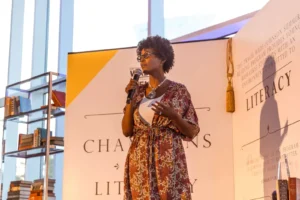
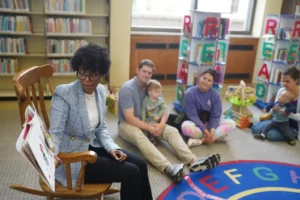
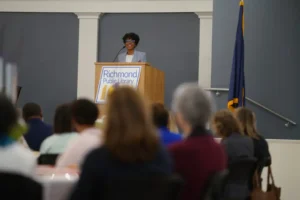
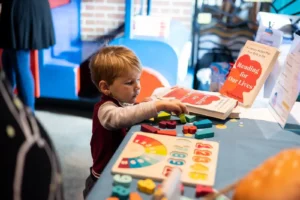

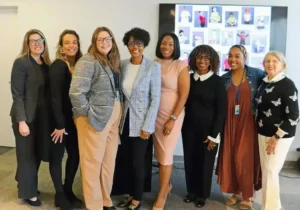
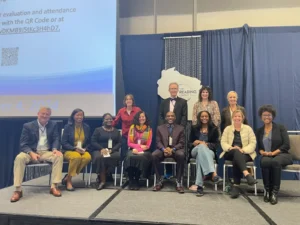
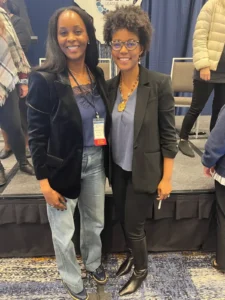
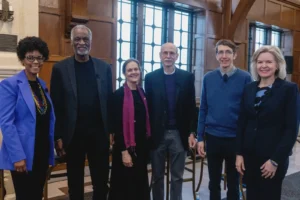
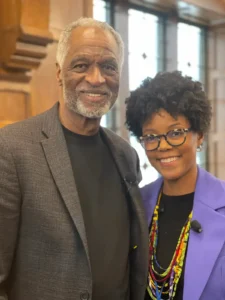
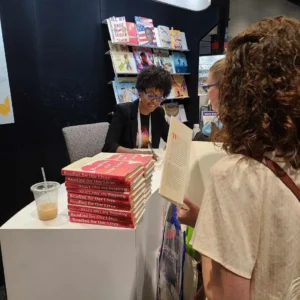


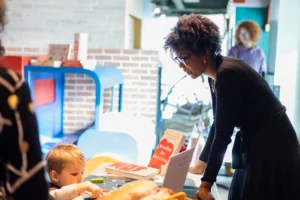
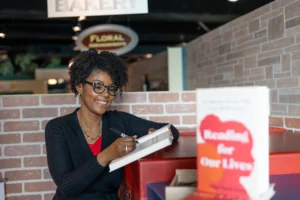
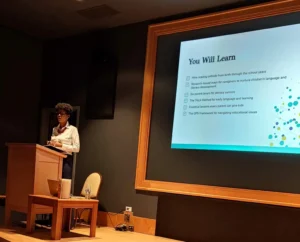
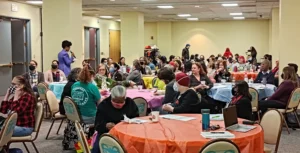
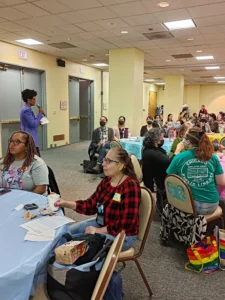
Helping kids develop strong reading skills is critical work with immeasurable ROI for society. In fact, I’m so convinced that fostering mass literacy is the most effective way to make a positive impact on our collective future that I’ve made it my life’s work. And I urge my readers and audiences to do all they can to bring reading to scale in our society by nurturing, teaching, and advocating for the young children in their lives and communities.
People often ask me how they can help support my work to promote literacy (beyond implementing the strategies I teach with any children in their lives). So today I’d like to share some ways that concerned citizens can join me in my mission to bolster literacy for all. Here are a few ways to help.
- Share Reading for Our Lives. I wrote the book to distill the science of reading into clear, actionable advice for parents. When you give it to parents or caregivers of babies and young children, you support them to effectively nurture the next generation of readers. For example, financial advisor Karen Ellenbecker of the podcast Money Sense told me that she gives the book as a present whenever a client has a baby. I love that idea! You can share the book’s message by giving it as a gift to employees, clients, friends, family, neighbors, and so on.
Milwaukee-based Porchlight Books offers excellent bulk pricing—38% or greater discount on 25 or more books. They also do a great job handling special orders if you want to explore bookmarks, bookplates or other customizations. Check out Porchlight’s current pricing. - Host a parent workshop. Consider organizing a program to help parents in your workplace or community get practical strategies for raising skilled, fluent readers from birth. My How to Give Your Child A Smart Start Workshop can be delivered in person or virtually to reach parents in your neck of the woods.
- Sponsor an author visit or program for a local organization. Schools, libraries, children’s museums, and community groups regularly reach out to me about speaking or presenting workshops, but they often can’t fully fund them. Consider making a donation to help cover event costs.
- Host me at a conference or convention. Are you part of an organization or community that may need a keynote speaker or workshop facilitator? If so, keep me in mind to bring a literacy for all focus. I’m available for virtual events and a limited number of in-person events. For 2024, I’m booked for in-person keynotes for library and early-education conferences in Iowa, Idaho, and Maryland. Plus, my virtual How to Give Your Child A Smart Start Workshop is available year-round, since it doesn’t require an airplane to deliver.
- Write a review. If you found Reading for Our Lives helpful, please share your thoughts on Amazon, Goodreads, the online bookseller of your choice, or your own website or social media account. Word of mouth is critical for the success of any book, and online reviews really do help boost the book’s visibility among book buyers, getting the message out more widely to those who need it most.
- Request (and check out) Reading for Our Lives at your library. Librarians are the ultimate book influencers, so putting the book on their radar makes it more likely that they’ll recommend it to patrons or feature it in displays or resources curated especially for parents.
- Help libraries create early literacy kits for families. Middle Georgia Regional Library got a grant to create literacy kits for families to check out that include interactive learning tools and copies of Reading for Our Lives. Supporting libraries to develop such kits is a great way to have a real-world impact and directly support parents and caregivers.
- Signal boost on social media. Follow @mayasmarty on Instagram and like, share, and save the posts that resonate with you. Also, check out my Pinterest page and repin your favorite content. Bonus points if you make your own social posts to highlight the book or any related events you attend.
- Link to Reading for Our Lives or MayaSmart.com from your website. I’ve been honored to be listed in (and linked from) parent resource pages of various organizations, from library family resource pages to educational board game makers.
- Subscribe to my newsletters. Visit www.mayasmart.com/newsletter to sign up to receive weekly free resources for raising readers and nurturing your family’s reading life. No kids at home? No problem. Forward relevant dispatches to others in your network who could benefit. I also have a monthly newsletter for folks who prefer less frequent messages with just the highlights about my literacy outreach efforts, such as recent and upcoming workshops and speeches. This is a great way to stay in the loop.
Know others who may want to help? Please share this post!
Parents of young children are confronted with an avalanche of choices from sun up to sun down. We have to make decisions about everything from how to feed, clothe, and soothe our kids to how to talk, teach, and read to them. With so many little decisions, it’s easy to drown in the details. And when that happens, we’re at risk of overlooking big-picture matters like kids’ language and reading development.
To avoid delaying or undermining our kids’ ability to become thriving readers and writers, though, we’ve got to combat decision fatigue throughout their upbringing and schooling. That’s where my GPS framework comes in. It’s an easy-to-follow, three-step decision-making process for parents that’s designed to help get your bearings straight and clarify next steps, from toddlerhood through college.
- G is for getting grounded in guidelines
- P is for pondering personal experience and observations
- S is for seeking the wisdom of specialists.
Use it in any parenting situation where you want to be sure to proceed thoughtfully and effectively. This framework can help you find your path, whether you’re worried about your child falling “behind,” considering tutoring or assessments, concerned about a school’s quality, or pondering the effects of screen time.
Here’s an excerpt from my book Reading for Our Lives that describes how to navigate parenting decisions with GPS:
When you’re feeling stuck, overwhelmed, or confused at any point on this years-long journey, use this GPS combination to find your way. Literally, stop and take a moment to assess what’s going on with your child. Consider their age and/or grade and then ground yourself in credible reference material, such as developmental milestone guidelines or kindergarten readiness checklists or state learning standards. Take some time to write out some personal thoughts and observations about your child in the moment, relative to what you’ve read. Then consult with a specialist in the relevant area to help you advance your understanding.
Guidelines. Well-researched lists of developmental milestones, school readiness checklists, and grade-level learning standards succinctly distill the best thinking on what to expect of kids when. Look to trusted sources, including the Centers for Disease Control, the National Institutes of Health, theAmerican Academy of Pediatrics, and the National Association for the Education of Young Children, and the International Dyslexia Association for helpful distillation of research findings. Keep in mind that these sources provide useful perspective on typical development—not an ideal path, but an average of many paths.
Personal experience. You bring considerable knowledge and expertise to the table, and it’s maximized when you consciously observe your child and your home, purposefully documenting what you see, hear, and experience. Pay attention to the gut feelings, recurring worries, or even feelings of calm and positivity that are all part of daily life with kids. Write down your observations. List your questions. Journal about what you’ve learned and discovered.
You can collect all of these thoughts in a paper journal on your nightstand or in a notes app on your phone—whatever method is most convenient for you. (Layer in some additional reminders to help you cement the habit, too, whether digital or analog. The best choice between a recurring weekly reminder on your calendar or a Post-it note on your mirror is the prompt you’re most likely to notice and act on.) Journaling, however informal, encourages greater self-awareness and self-knowledge, as well as better attention and attunement to your child’s journey—not to mention a helpful record of your child’s milestones and challenges to share with your village when needed.
Specialist insights. Now, once you’re coming from a place of basic knowledge and awareness, if you sense there’s an issue in your child’s development or you just want to learn more, tap into other people who can help. Sometimes this requires you to expand your network or venture outside of your comfort zone. Ask your pediatrician about the milestone or bring the topic up in a parents’ group. This third step of reaching out, asking questions, and raising issues is critical. It sparks the habit of engaging with others around parenting, counteracts feelings of loneliness, and lessens worries about outside judgment.
All the GPS framework does is codify three steps that many savvy parents already think to do sometimes—so that you’re more likely to repeat them again and again through your parenting years, as you face all manner of challenges, decisions, and issues. You can still consult family and friends, your media of choice, or Google. You’ll just also have a handy prompt to ground your thinking in generally accepted milestones and standards; deep reflection on your child, your family, your aims; and the specific expertise of people working in the space.
One mom I spoke to noticed that her son was below age-expectations in speech starting at his 9-month doctor’s visit and began monitoring it closely. She brought up the issue with his pediatrician and,when he was still behind at 12 months, got a referral to free speech therapy through their county in Colorado.
“For me, taking my own concerns seriously and bringing them up with the pediatrician was key. Then the paperwork to get the evaluation took a while, but I tried to stay on top of that,” she explained. “I also think looping in experts does help in this case. We heard a lot of well-meaning family and friends say, ‘so-and-so’s kid didn’t talk at all until she was three, and now she never stops talking’ or ‘all second children talk late.’ Those can be true, but it was also true in our case that our son had a developmental delay, that is about more than just words, but about how he communicates with us.”
And, as you know, it’s also about his long-term literacy prospects, because oral-language development is so intimately tied to vocabulary, comprehension, and the language of reading instruction.
Reprinted with permission From READING FOR OUR LIVES by Maya Payne Smart, published by AVERY, an imprint of Penguin Publishing Group, a division of Penguin Random House, LLC. Copyright © 2022 by Maya Payne Smart.
While older kids may struggle with poetry, younger kids can’t seem to get enough of it. Traditionally at least, nursery rhymes and songs have been children’s first exposure to poetry—they learn them as babies, then carry them into the playground through childhood games. Look at the baby books in your local bookstore or library, and you’ll likely see rhyming texts outweigh others by many multiples. And many little ones start making up their own songs and poems almost as soon as they start speaking.
When I started reading with my baby daughter, I noticed she seemed to enjoy and pay attention to rhyming books more than others. On the flip side, she got more impatient with board books that didn’t rhyme, no matter how beautiful or colorful the illustrations. Later, when she started putting words together, she would often join in at the end of each rhyming line as we read, either with the correct word or with a sound that came close to it.
But what is it about poetry for kids and rhyming that is such music to young children’s ears? And how can rhyming picture books and poetry books help with engaging little readers and developing literacy? Let’s delve into the benefits of rhyme, plus how to incorporate poetry and rhyme into everyday life with little ones.
Kids Love Rhyme
If you want to encourage your child’s love of reading, follow their lead. Expose them to a variety of books, stories, and formats, but pay attention to what they gravitate towards—that’s what will hook them on reading. And if what they pick out happens to be rhyming stories, there’s wisdom in that.
Kids find the rhythm and predictability of rhyming poetry oh-so-satisfying. The tempo taps into the appeal of music and dance. The sing-song cadences mimic infant-directed speech, or “baby talk,” which drives language learning and connection. And there’s a gratifying build-up of anticipation towards the end of each rhyming line. Knowing or guessing what will come next builds their confidence and encourages them to join in.
Indeed, one recent survey found that children and young people who read poetry enjoyed reading more than those who didn’t—62% vs 42%. Whatever is behind that correlation, it’s a reminder about the joys of poetry.
Poems for children and rhyming picture books also tend to be short, which is great for those young attention spans. And many are funny, silly, even subversive, delighting younger children and keeping them motivated.
The bottom line? Give time to rhyme!
Rhyming Books Boost Literacy & Language
But rhyming poetry texts aren’t just fun. They also pull their weight in developing early literacy. Think of the rhyming and alliterative sounds as starter pieces in the language puzzle, attention-grabbing and easy for little brains to grasp. Over time, these developing brains figure out how the sounds fit together and make sense, paving the way for talking, reading, and writing.
Rhymes and alliteration highlight key elements of language, boosting kids’ phonological awareness—the ability to recognize units of spoken language, such as syllables and the beginning and ending sounds of words.
For example, the great majority of two-syllable English words start with a stressed syllable, and so a stressed syllable can alert babies and toddlers that a new word is starting. Listening to the kind of repeated rhythmic cues found in rhyming poetry reinforces this signaling.
Similarly, kids can hear the rhyme and alliteration of “pitter-pat” and “kitty cat.” They might even be able to break down the sounds, tap out the rhythm, and create their own rhymes to match. When it comes to learning to read and write, these phonological skills help them learn to sound out words, because they already have a trove of letter-sound relationships to draw on.
Rhyming poetry is also easy for young kids to remember—in fact, they’re better at memorizing poems than grown-ups. And this repeated exposure to words and sounds builds their phonological awareness and vocabulary.
How To Choose Rhyming Books & Poetry For Kids
Again, the number one takeaway is to encourage your child’s tastes. You may find that there are particular authors or poets that tend to be a hit with them—my daughter loved Rachel Bright, Michael Rosen, and Julia Donaldson, to name a few.
Variety is also good, though, and here you can exercise some judgment. Look out for books and authors who don’t just use rhyme for the sake of it, but those that use it to enhance their storytelling. For every beautifully written rhyming children’s book, there are countless others that may be almost unbearable to listen to or read aloud, whether due to forced rhymes, clunky meter, or because the story and rhyme feel shoe-horned together.
Ideally, rhyme should elevate the story and help it to flow, not hold it up. You can also look for lyrical books that use elements of rhyme, but aren’t written in a strict meter, and song-based picture books that kids can sing along to, like Wonky Donkey and What a Wonderful World.
Side note on language: simpler may be better. Some figurative poetic language that uses metaphors to compare one thing to another might be too complex for younger readers to follow. This can make it distracting in itself, especially if it’s on the abstract side.
Bring Rhyme Into Everyday Family Life
Of course, reading together is just one way you can enjoy rhymes and poetry with your kids. So if rhyming is your family jam, why not celebrate, practice, and integrate it outside of story time, too?
Starter ideas: favorite a few playlists to listen to in the car, make up your own rhymes and songs as you go through everyday routines, create collections of rhyming objects, watch videos and live performances of poetry and songs, and have fun with rhyming wordplay games.
Ready to dive into poetry and rhyming books with your kids? Check out our book lists for inspiration!
It’s not uncommon for kids to have trouble focusing on reading. In a day of endless entertainment (and distractions), analog reading can be at a disadvantage for capturing their attention—at least until you get them hooked.
Some kids may also experience issues if they’re dealing with an undiagnosed developmental challenge. If you think this could be the case, check out Maya’s framework for assessing your child’s development and knowing when to seek help.
Often, children just need a little help getting started and staying engaged in reading. Take a look at these eight tips that can get your child into books, from your earliest days reading aloud to them through learning to read on their own and continuing to read as they grow older.
In this article, we’ll answer questions like How can you get your child to read more? How can you help your child love reading? How can you get your child to read independently? and Should you use technology to help your child read?
Make a Reading Routine
Thoughtful routines help children (and all of us) build healthy habits, from bedtime and mealtimes to exercise and beyond. And reading is no different. Parents can establish a regular reading time in order to build and cement the reading habit.
This might mean reading a bedtime story with your child each night. You could curl up and read a picture book with your young child, or read out loud from a chapter book when they’re ready. In order to successfully establish a reading routine, make it a point to do this every night to the best of your ability. If you’re tired, just read a short book or a few pages. It’s the repetitive action that really cements the reading habit, not killing yourself to stretch out the amount of time.
But bedtime story time is not the only option. If you have a more flexible schedule, you might read with your child every morning, after lunch, or while you enjoy a cup of afternoon tea. You might take a weekly trip to the library for fresh reads, and then enjoy the books together afterward. The point is to find something that works for you and your child and then turn it into a reading routine. Keep it fun and focus on the closeness and interaction with your child, and soon it can become a part of your day that you both look forward to.
(For more ideas, check out these summer reading tips for kids from a seasoned early childhood educator.)
Choose Age-Appropriate Books
In order to really accomplish that goal and build good reading habits, it’s crucial for your child to enjoy reading time. You need to hook them to focus on the book and make them want to return to the experience again and again. To really engage your child in books, you need to consider the reading level, the format, the topic, and the overall experience—and choosing age-appropriate books is a major part of all of those elements.
Books that are written in language they can easily understand will obviously engage kids more than other books. Similarly, a picture book with bright, attractive illustrations will draw in a 1-year-old—or often even a 5-year-old—more than a book with no illustrations. A graphic novel written at the child’s reading level may engage an early independent reader more than a dense chapter book. And what makes a good children’s book is different from what makes an excellent young adult book, so take the time to seek out recommendations and find the best books for your child at each stage.
Follow Their Interests … But Vary the Genre
In the same vein, reading books about topics kids find interesting is a powerful way to engage them. If your child is obsessed with trains or butterflies, they’ll be primed to pick up a picture book about those themes. If your kid is a huge sports or music fan, books about their preferred topic or about their favorite stars may do the trick.
As they get older, helping them define their evolving tastes and find books that fit their interests can be the difference between keeping them avid readers or losing them to other pursuits. Maybe they love fantasy and adventure, or maybe they connect better with books about regular kids facing everyday challenges. Maybe discovering the world of science fiction or murder mysteries will engage your tween with reading in a new way, while teens might get into romance, thrillers, biography, or historical dramas.
All that said, there’s nothing wrong with stretching your child sometimes. You may hook them at first by reading about their favorite topic and choosing age-appropriate books with simple vocabulary. But once you have them on board, you can also stretch them by reading books about topics you find interesting and sharing your enthusiasm, or by reading a book with more complicated language and stopping to explain words and context when necessary.
All along the way, expose them to the widest variety possible of books, including diverse styles of fiction and nonfiction, poetry and rhyming books, books with diverse characters and by diverse authors, and of course books about a wide range of topics. To help, check out our curated lists of children’s books for specific themes.
Bring Your Enthusiasm & Read with Conviction
The overall experience can be part of what engages a child in reading time and gets them to buy in long enough to get hooked on the story. Just being close to you and receiving your undivided attention may be the best part of story time for them. You can also create settings that make reading time special: A tea party that includes a shared picture book. A trip to a coffee shop with a stack of books to thumb through. A summertime picnic with older kids in which you all sprawl on a blanket with your own novels.
Find books you love reading to your child. Seek out your own childhood favorites to share, or look until you find new favorites to discover together. Get cozy, comfy, and close. Read with inflection and really try to get into the story. Experiment with using different voices or accents for different characters, if that feels right to you. If you bring enthusiasm, love, and attention to reading with your child, they’ll learn to value reading time.
It’s incredibly valuable to keep reading to kids long after they are capable of reading to themselves. You’ll read different sorts of books to them than they read alone, and you’ll bring explanations, interaction, and your relationship to the shared reading experience.
Nevertheless, you’ll want to start transitioning them to reading independently as soon as they’re ready, in addition to enjoying your read-alouds. One way you can do that is to motivate them by letting them catch you reading to yourself—books, magazines, newspapers—anything they can identify as reading (as opposed to generic screen time). But it will take some more hands-on support, as well. The tips below deal especially with supporting kids to read on their own.
Give Your Child the Skills to Read
Nothing will kill the urge to read like encountering too much frustration when they try. If your child lacks the skills to read with enough ease, they’ll likely turn away from the pursuit. But the good news is that any parent can easily prepare their child for reading just in the time they already spend with their child.
Interacting with your child from birth onwards is key to setting them up for success as readers. Talk to them, listen to them, and respond to what they say (in whatever language you’re most comfortable in; it doesn’t have to be English). Read or recite nursery rhymes with them and play with words, sounds, and rhymes. Point out the words in books you read aloud. Teach them the ABCs, including the sounds the letters make, and how to write them.
All of this will help them learn to read more easily and read better once they start. And the easier and more satisfying the experience, the more they’ll be inclined to keep it up.
Be Patient & Supportive
Patience is arguably the most powerful tool in a parent’s arsenal (if the most easily overlooked, especially by new parents). When your child is small, patience in reading time looks mostly like tolerating their wiggles and interruptions—which are actually a valuable part of the story time experience—and letting it drop when they’ve had enough.
When they start to learn to read on their own, though, is when patience becomes especially vital. Bringing your patience and supportive attitude to helping your emergent reader is mission-critical for getting them to stick with it and power through the hard parts. When they make the same mistake for the 1000th time, stomp off in frustration, or throw the book in anger, you can make the choice to take a deep breath and not respond until (and unless) you have something kind and helpful to say.
Parents are only human, too, and you won’t be perfect. But recommitting again and again to being as patient and supportive as you can will pay big dividends all along your journey raising a reader.
Tip: If your child is getting frustrated reading themselves, you can offer to alternate reading sentences, pages, or even words to give them a break. They’ll also get a lot out of just reading along in their heads as you read out loud, maybe pointing to the words as you go.
Set Reading Goals & Rewards
Setting goals and incentives may also motivate your child to read more, to push past challenges, and to choose reading in the face of other distractions and demands on their time.
Many libraries and school districts have summer reading programs that allow children, teens, and even adults to win prizes for their summer reading. You can also set up a reading incentive program with your child. Once they have a stack of tempting books, involve them in the process of choosing goals and rewards that will inspire them to read.
They may want to aim to read a certain number of books or pages in a given timeframe, or they may want to read at a set frequency or for a certain amount of time each day or week. Help them brainstorm realistic goals, and then talk to them about reading rewards they might like to earn.
Keep in mind that these don’t have to be material or financial. Maybe they’d like to earn the right to choose dinner one night, to watch or choose a family movie, or to earn special time together, like playing their favorite game (that you hate) or going somewhere they love.
You can even up the fun factor by playing reading bingo with various reading challenges. Make your own card, or just download our printable Reading Challenge Bingo card. Get it free inside the VIP Vault.
Use Technology to Your Benefit
Kids today are digital natives. You can turn that to your benefit by building some reading into their technology time.
But a word of warning: It’s probably better to think in terms of adding reading to their screen time than in terms of adding screens to their reading time. There’s some evidence that reading on a screen is not the same as reading on paper, and many parents want their children to experience ways to entertain themselves without screens, too. So do be sure to introduce your child to abundant physical books and make sure they always have access to new ones, from your library, a little free library, or used or new bookstores. Similarly, limiting screen time is one of the most parent-proven ways to spur kids to turn to books for entertainment.
That said, there are many ways to add reading to screen time, from word games to e-books. Even small kids can play ABC games on tablets or phones. Later, they can graduate to word and spelling games. Seek out educational technology and games that have educational benefits, and put those in the mix of their digital entertainment. Older kids can play Wordle, individual or social scrabble-type games, and other word games that support reading skills.
In terms of e-books, they’re a great option when traveling, or anytime you want your child to read but can’t necessarily cart around a bunch of books. They’re also good for kids who get into a series and tear through the books so quickly that you can’t keep up, even with frequent library visits.
Numerous online bookstores offer a huge variety of e-books at reasonable prices, but you can also save money by using your local library—most have lots of e-books available to check out with simple apps you can access from your phone.
If you found this article helpful, please share it!
Maintaining or improving family wellbeing is a tightrope act. From financial hardships to time pressures and life upheavals, there are a host of challenges primed to throw it off. And that’s before factoring in the daily struggle of parenting itself, complete with its constant juggle of cleaning, managing tantrums, and food prep. Not to mention the destabilizing effects of recent lockdowns and the pandemic’s toll.
Hardly surprising then, that parental stress and reports of parental burnout seem to be at an all-time high. The end result of all this stress? It lands with our kids. Which is one reason childhood development expert Dr. Gabor Maté says that “the primary task of parenting is self-parenting, taking care of ourselves.”
But self-care for moms and dads doesn’t have to mean taking time out of the family flow. In fact, here’s a radically simple self-care practice that should come as welcome news for overburdened parents: Reading books with your children. Yes, it’s good for your kids. It nurtures their early literacy through boosting language development, building vocabulary and stimulating brain capacity, plus brings them a multitude of social and emotional benefits. But evidence suggests it can also help you, reducing your stress, easing depression, boosting your self-esteem, and making you feel more connected.
Shared Reading Lowers Parenting Stress
Can reading with your children really have that much of an impact on reducing parental stress? Yes, according to some exciting research.
Researchers looked at what happened to parenting stress levels in a group of mothers when they were encouraged and guided through verbal interactions with their children, via pretend play, shared reading, and everyday routines. The results were eye-opening.
Promoting positive parent-child interactions resulted in parenting stress levels that were 17.7 percent lower than those in the control group, even when those moms experienced financial hardships and educational challenges in addition to their parenting load. That’s huge.
Reading to Your Kids May Help with Parental Depression
Another study looked at the effects of the Reach Out and Read program on a small sample of young mothers. Though the study size was limited, the positive outcomes were notable. Adolescent mothers who read with their children were nearly five times more likely to report that reading was one of their favorite activities to do with their child, and seven times more likely to report that reading was one of their child’s favorite activities. So, they were rewarded with a high level of enjoyment on both sides.
But, what’s more, among the mothers reading with their children, the odds of having clinically significant depression decreased by nearly half, while for those in the control group the odds actually increased. That’s a big result for a small wellbeing practice.
Sharing Story Time Boosts Parents’ Self-Esteem
Stress, difficult life events, anxiety, loneliness, and depression can all take their toll on self-esteem. Nurturing self-esteem and our sense of self-efficacy—feeling that we are capable—is an important part of caring for ourselves.
And there’s evidence to suggest that reading with your kids can even help in this area, too. When parents gave feedback after taking part in family literacy programs, one of the main benefits they reported was an uptick in their confidence—in themselves generally, in their ability to communicate, in their own literacy skills, and in their ability to help their children.
So next time you pick up a book with your kid, just think: You might get a little confidence boost while you’re at it. And as every parent trying to do their best knows, that’s no small thing.
Family Reading is Good for Parents Over Time
Of course, reading with your children is about more than what’s going on during the time you’re enjoying a story together. The benefits build and continue long after the book has closed. And that goes for its effects on parental wellbeing, too.
In one study, the impacts of shared reading between low-income mothers and their kids, from infancy through to toddlerhood, produced encouraging results when it came to parental stress, parental warmth, and parental sensitivity. Reading with kids at six months was positively correlated with experiencing less parental stress when their babies reached 18 months, suggesting that early shared reading pays off for parents down the line. Sounds like a self-care investment worth making.
When it comes to parental stress, parental burnout and family wellbeing, there are no quick fixes. But it’s good to know that something as simple as sharing a book together benefits not just one generation, but two. And that the evidence for its effectiveness is mounting.
It doesn’t take much to get behind the idea of a better parent-child relationship, being close, taking a quiet few moments, enjoying a cuddle, and feeling the pressure ease off you as a parent to be “active.” So, next time one of your go-to self-care activities feels too ambitious or unrealistic, remember that reading to your little one can be self-care, too, and you can continue reaping the benefits long after it’s over.
There are thousands of ABC books out there. So you’ll need a few good filters to narrow down the options. If your goal is to help teach your preschooler the letters of the alphabet (as opposed to vocabulary, say), use the following five questions to evaluate books:
- Are the target letters legible and set apart by size, color, or font?
- Do they use the most common sounds for each letter?
- Do the illustrations complement (not overwhelm) the letters?
- Is the text kept to a minimum?
- Is the story and vocabulary engaging and understandable for a preschooler or your particular child?
Please note: All of my criteria are for assessing printed alphabet books, which I recommend highly over ebooks for letter learning. Although digital books, including ABC books with interactive elements, are growing in popularity, early research suggests that printed books are more engaging for three- and four-year-old kids. There’s something about holding printed books in hand that gets three and four year olds more jazzed about naming and touching letters than ebooks do.
Look for letters that are easily legible and set apart by size, color, or font
When teaching letters is your aim, it should go without saying that the alphabet books you choose should feature crisp, clear letters. But this point is often overlooked by book buyers. We get sold on the novelty, cleverness, or artistry of certain ABC books’ content or illustrations, forgetting our preschool audience and our goal of teaching letters.
In terms of what does work for alphabet books, a wide range of fonts will do. The typography or text characters just need to clearly distinguish the lines, curves, humps and dots of the letters they feature.
I recommend that parents start with books that focus on uppercase, print letters first. This eliminates the challenge of tackling the intricacies of the hooks and curves that turn up in many fonts’ portrayals of lowercase “a” and “g.” (See this great video on the elusive letter G.)
Once kids have mastered the uppercase letters, then you can shift attention to the lowercase versions and even feel free to throw script and handwritten fonts into the mix. Most alphabet books that feature uppercase letters also include examples of lowercase letters on their pages, so you’ll have both bases covered.
Many books that make lovely additions to more advanced readers’ libraries don’t pass the eyeball test for beginning letter learning. In AlphaBit, for example, the color gradients, jagged edges, and inner dots muddle the letter shapes. Its target audience is likely a more advanced reader with an appreciation for classic video games. Think young gamers with the skills to navigate pixelated seek-and-find quests and more advanced vocabulary on the page.
And in A to Z Menagerie, the illustrations are the main act. The tiny object labels are mere afterthoughts, written in such a light, faint font that you can’t trace the letters’ contours or highlight their curves and intersections for beginning readers. This title is more suited to building oral language and knowledge of letter sounds than for teaching kids to recognize print letters.
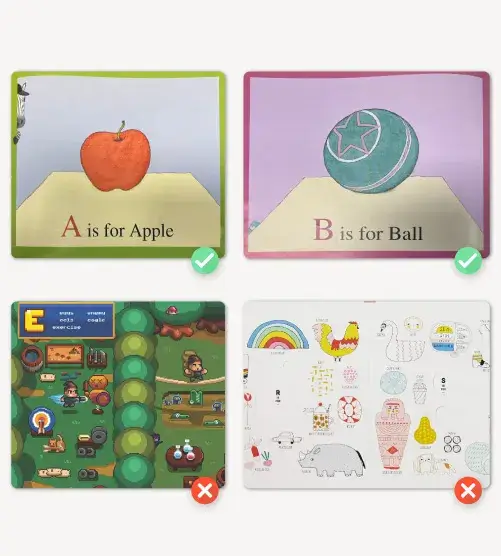
Seek out ABC books that use the most common letter sounds
To help beginning readers start to make letter-sound connections, it’s best to focus on introducing them to the highest-frequency sound(s) for each letter. For example, the /g/ sound for G (go), not the /j/ sound (gesture).
But alphabet books tend to be all over the map with the words they use to represent sounds. Some, like P is for Pterodactyl: The WORST Alphabet Book Ever (their words, not mine), delight in presenting rare sounds for each letter. Use a title like this to build spelling skills down the line, not for teaching preschoolers their ABCs.
Similarly, A is for Bee: An Alphabet Book in Translation, offers a beautiful and inventive exploration of variations in languages across cultures and subverts the “A-is-for” formula to serve up matches in other languages. This would be a book to buy if your aim was sparking lovely conversations about vocabulary with the little linguists in your life. It’s not a fruitful starting point for teaching English letter-sound basics, though.
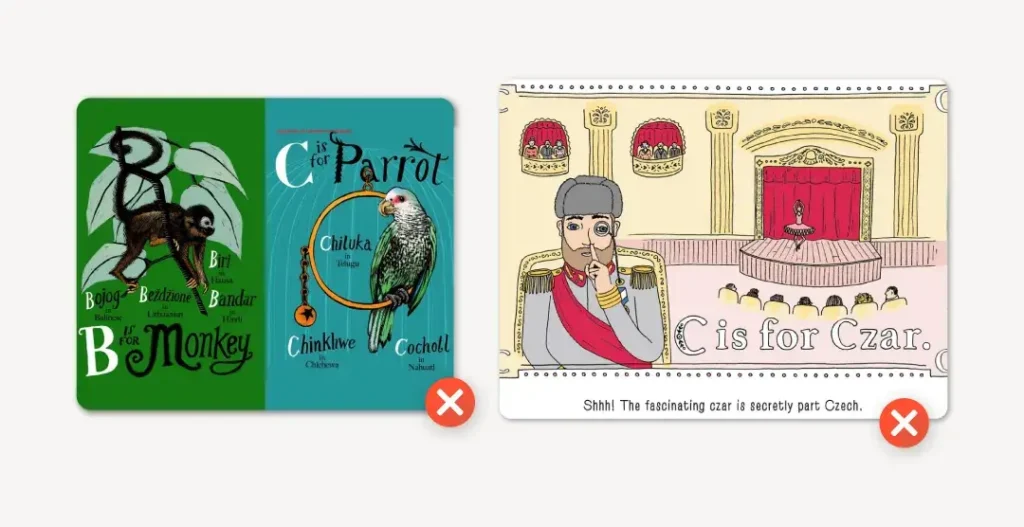
When browsing ABC books, you may want to use Jessica Toste’s sound chart, shown below, to check which use the highest-frequency sound for each letter. Keep in mind that for the letter X, the best examples will fall at the ends of words: Fox and box better illustrate the main /ks/ sound of the letter x than xylophone, an ABC book favorite that actually features the /z/ sound. That said, few alphabet books feature the most common sound for every single letter, so my rule of thumb is to go with books where at least 20 examples do, or (preferably) even more.
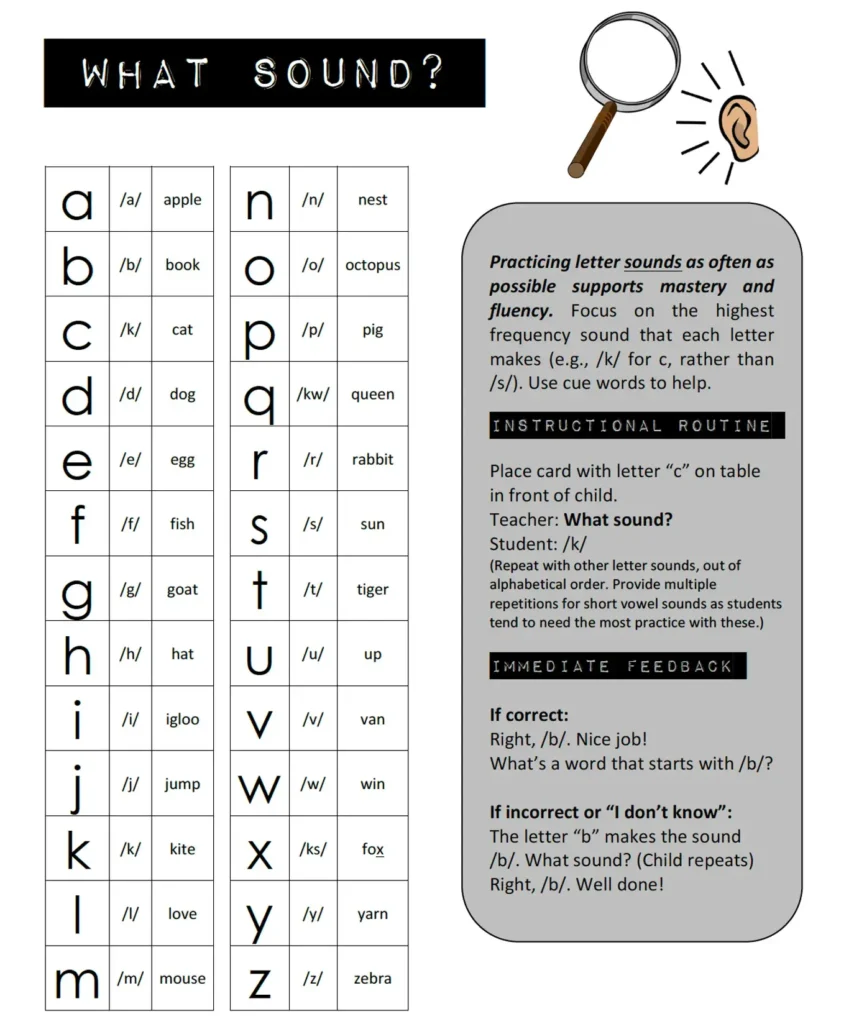
Make sure the illustrations don’t overwhelm the letters
The classic letter-is-for-object format (e.g., A is for apple) can present a bit of a riddle for kids to solve. If the puzzle is too complex, the learning can take a hit. For example, an illustration of D is for dog might also show a yard, ball, stick and any number of other objects in addition to a dog. This means the child trying to understand the words will need to figure out which is the target item. When the illustration is too complex or is open to multiple interpretations, it makes the lesson harder to grasp.
So simpler illustrations are better for alphabet teaching. You want your little one to tune into the letter shapes, names, and sounds, not get lost in the imagery or mystery of the sound-object match. Q is for queen paired with an image of a woman in a crown is more helpful than hard-to-interpret scenes meant to illustrate abstract words like question, quirky, or quality.
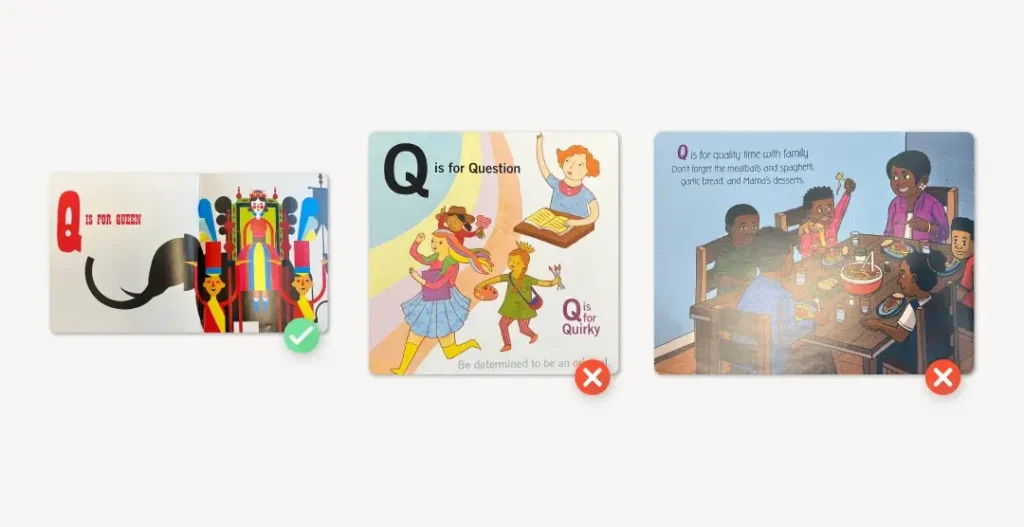
Additionally, some of the books with the most compelling illustrations also have the least-clear letter shapes. At least eight different alphabet books have won Caldecott medals or honors, which are given to the artists of exceptional picture books, but art (not letters) are their focus. The result: imaginative but less recognizable letter forms. These volumes are better suited to engage more advanced learners than for teaching preschoolers the alphabet.
Caldecott Honor winner Alphabatics is an exception. Lauded for its illustrations, it also features bold sans serif upper and lowercase letters that draw kids’ attention to the letter shapes.
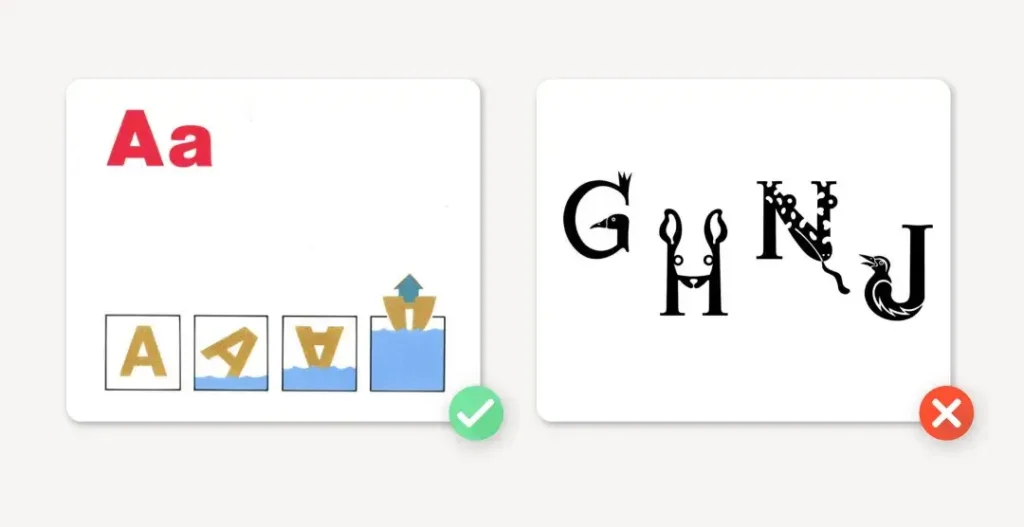
Look for ABC books that don’t have too much text
And it’s not only illustrations that can clutter and distract from letters on the page. Too much text is a drag on little ones’ attention, too. In the face of text overload, studies suggest that kids start paying more attention to the illustrations.
Moreover, a small study that compared how middle-income parents read a “busy” and a “less busy” alphabet book to kids found that the density of text and images affected how parents spoke with kids. The “less busy” book featured fewer words and sentences per page, more monochromatic images, and a larger target letter printed in a contrasting color. This format led the parents to talk about the print in a way they didn’t with the busier book.
One caveat is that most ABC books have more text and images than are ideal for letter-teaching purposes, so it may take some time to find your favorites. Still, titles with simple text like B is for Baby by Atinuke are out there.

Check that the book and vocabulary will make sense to your child
There’s a lot more going on in reading an ABC book than flipping through a stack of letter flashcards—happily. So it’s also important to consider the story and vocabulary in an ABC book, as well as the background knowledge and context necessary to understand it.
Aim to select books that make sense to kids on both the word and story levels. If the vocabulary is too much of a stretch in terms of meaning and pronunciation, it only distracts from the core mission of teaching letters. Lighten the cognitive load by choosing books full of words your child is likely to already understand or can quickly grasp, plus storylines or examples they care about.
A common misstep parents make is buying alphabet books on themes that interest us, not our kids. Sure, they’ll get something out of the shared reading experience of nearly any book, but why not put your child first when you choose a book for them?
U is for Unicorn: The ABCs of Silicon Valley is hilarious, but I would give it to an older child, even a middle or high schooler, as a way to build vocabulary and topic knowledge.
Emergent readers will get more out of titles about the horned variety of unicorn than the elusive billion-dollar-valuation startup. And while incubator starts with the common /i/ sound, it’s a bit advanced for the preschool set.
Even alphabet books designed with kids in mind can lead us astray from letter learning by introducing less-common letter sounds or a variety of distracting fonts. Alphabet books that explore historical figures, local habitats, folklore, and more are wonderful when you want to build your child’s knowledge of different topics, bolster their vocabulary, and deepen their spelling knowledge—not for teaching them their letters early on. In fact, I’d venture to say that most alphabet books are best suited for exploring topics other than the alphabet. The intricate illustrations and advanced vocabulary just aren’t designed to help beginning readers lock in on print.

May these five questions help you home in on titles that will actually help build the letter knowledge your child needs.
If you found this post helpful, please share it!

